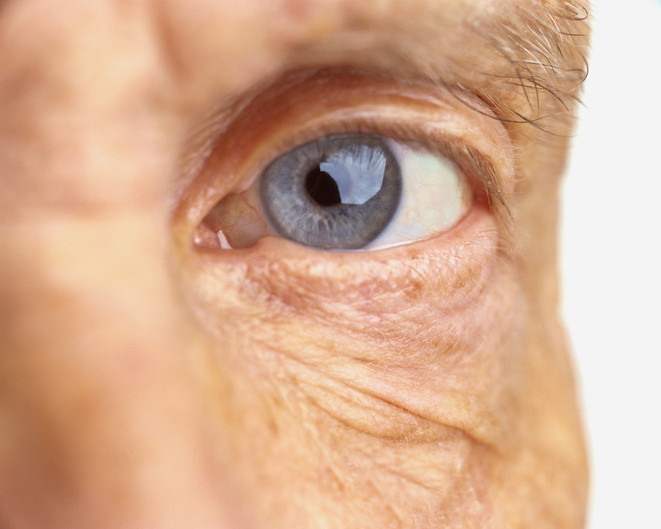Diabetic retinopathy: Understanding diabetes-related eye disease and vision loss

Over 30 million people in the United States live with diabetes, and approximately 7.7 million people have diabetic retinopathy, making it the most common cause of vision loss in working-aged adults. The prevalence of diabetic retinopathy has increased significantly over the past 20 years, due to the rise in the number of people diagnosed with diabetes.
How does diabetes affect the retina?
The retina is the light-sensing component located in the back of the eye. It is composed of blood vessels, nerve cells (neurons), and specialized cells called photoreceptors that are involved in directly sensing light. The ability of the retina to sense light requires energy, which is dependent on the oxygen supplied by blood circulating through blood vessels.
In diabetes, elevated blood sugar levels damage the blood vessels of the retina. These damaged blood vessels leak fluid, bleed, and do not provide adequate oxygen to the retina, leading to retinal ischemia. As a result, retinal cells begin to die and the retina is unable to function properly. In addition, diabetes also damages the neurons of the retina directly. Together, these effects cause diabetic retinopathy.
Vision loss associated with diabetic retinopathy may initially affect central vision due to a condition called diabetic macular edema. This swelling of the macula, a portion of the retina responsible for sharp, central vision, can lead to blurry vision and distortion of images.
Advanced diabetic retinopathy is characterized by the formation of irregular blood vessels that can bleed inside the eye, causing a rapid loss of vision. This results in a sudden, curtain-like vision loss as blood fills up the inside of the eye. Further worsening of advanced diabetic retinopathy can lead to retinal detachment, which requires urgent surgical intervention and can result in permanent, irreversible vision loss if not promptly treated.
What can I do to prevent diabetic retinopathy?
The American Diabetes Association recommends that most people with diabetes keep their A1c level (a measure of average blood sugar levels over the previous two to three months) below 7% to prevent the risk of complications. As blood glucose directly damages retinal blood vessels, there is strong epidemiological evidence that blood sugar control translates to decreased incidence and severity of diabetic retinopathy.
In order to reduce the cardiovascular and microvascular complications of diabetes, which include retinopathy, nephropathy (kidney disease), and neuropathy (nerve damage), it is recommended that people achieve and maintain a normal blood pressure. Blood pressure reduction can delay the onset of diabetic retinopathy, but it is unclear if controlling blood pressure can alter the course of established diabetic retinopathy. Similarly, managing cholesterol is advocated for overall diabetes management, but it is not clear whether doing so reduces the risk of diabetic retinopathy.
How can I find out if I have diabetic retinopathy?
An ophthalmologist can diagnose and begin to treat diabetic retinopathy before sight is affected. In general, people with type 1 diabetes should see an ophthalmologist once a year, beginning five years after the onset of their disease. People with type 2 diabetes should see an ophthalmologist for a retinal examination soon after their diagnosis, and then schedule annual exams after that. You may need to see an ophthalmologist more frequently if you are pregnant or have more advanced diabetic retinopathy.
What can I do to prevent or slow down vision loss if I have diabetic retinopathy?
As mentioned above, damage to the blood vessels deprives the retina of oxygen. Insufficient oxygen leads to production of a signal protein called vascular endothelial growth factor (VEGF). VEGF and its role in eye disease were first discovered at Harvard Medical School.
Currently, there are medications that can bind VEGF and subsequently improve the symptoms of diabetic retinopathy. These “anti-VEGF” agents are injected directly into the eye and can improve diabetic macular edema, and can even improve the severity of diabetic retinopathy. In some people, steroids injected directly into the eye may also improve diabetic macular edema. In some advanced cases of proliferative diabetic retinopathy (the most advanced form of diabetic retinopathy), patients may require retinal laser therapy or retinal surgery to stop or slow bleeding and leakage, to shrink damaged blood vessels, or to remove blood and scar tissue.
About the Author

Leo Kim, MD, PhD, Contributor
Disclaimer:
As a service to our readers, Harvard Health Publishing provides access to our library of archived content. Please note the date of last review or update on all articles.
No content on this site, regardless of date, should ever be used as a substitute for direct medical advice from your doctor or other qualified clinician.
















